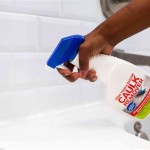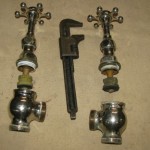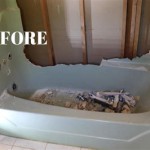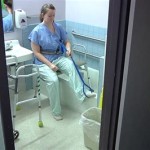How to Safely Assist Elderly Individuals Out of a Bathtub
Assisting elderly individuals out of a bathtub presents a significant challenge due to decreased mobility, balance issues, and potential fear of falling. A meticulous and carefully planned approach is crucial to ensure the safety and well-being of the individual and prevent injuries to both the person assisting and the elderly person. Understanding the potential risks involved and implementing appropriate safety measures is paramount.
Before attempting to assist an elderly person out of the bathtub, a thorough assessment of their physical and cognitive abilities is necessary. This evaluation should include an understanding of their muscle strength, range of motion, balance, and cognitive awareness. Identifying any pre-existing medical conditions, such as arthritis, osteoporosis, or stroke, that could affect their ability to move safely is also vital. Furthermore, determining their level of cooperation and understanding is important to ensure they can follow instructions effectively. If the individual exhibits significant mobility limitations or cognitive impairment, seeking assistance from a professional caregiver or physical therapist is highly recommended.
The bathroom environment itself should be assessed for potential hazards. This includes ensuring the floor is dry and free from any obstacles that could cause tripping. Adequate lighting is essential to improve visibility and reduce the risk of falls. The presence of grab bars near the bathtub is crucial for providing support and stability during the transfer. If grab bars are not installed, consider having them professionally installed or using temporary suction-cup grab bars as an interim solution. Addressing these environmental factors can significantly minimize the risk of accidents during the process.
Preparing the Bathroom Environment
Creating a safe and accessible bathroom environment is the first and arguably most important step in assisting an elderly person out of the bathtub. This involves preparing the space to minimize the risk of falls and maximize ease of movement. Key considerations include:
Floor Safety: Ensure the bathroom floor is completely dry. Moisture can significantly increase the risk of slipping. Use non-slip mats inside and outside the bathtub to provide added traction. These mats should be securely attached to the floor to prevent them from shifting or bunching up.
Lighting: Adequate lighting is essential for clear visibility. If necessary, install brighter light bulbs or add additional lighting fixtures to illuminate the bathtub area. Poor lighting can make it difficult to judge distances and perceive potential hazards.
Grab Bars: Properly installed grab bars provide invaluable support and stability. They should be strategically placed near the bathtub walls, allowing the individual to grip them firmly while maneuvering in and out of the tub. Consider both horizontal and vertical grab bars to accommodate different grip preferences and movement patterns. Ensure the grab bars are securely mounted to the wall studs to withstand the individual's weight. Suction-cup grab bars can be a temporary solution, but their reliability is less consistent and they should be used with caution.
Accessibility: Remove any obstacles that might impede movement around the bathtub. This includes items such as bath mats, towels, or toiletries that could be tripping hazards. Create a clear pathway from the bathtub to a nearby chair or bed, where the individual can sit down immediately after exiting the tub.
Temperature: Maintain a comfortable temperature in the bathroom. Elderly individuals are often more sensitive to temperature changes, and a cold bathroom can cause muscle stiffness and shivering, increasing the risk of falls. Ensure the room is adequately heated before assisting the individual out of the bathtub.
By meticulously addressing these environmental factors, the bathroom can be transformed into a safer and more user-friendly space for elderly individuals, significantly reducing the risk of accidents during the bathing process.
Utilizing Assistive Devices
Employing assistive devices can significantly enhance safety and ease of movement when assisting an elderly person out of the bathtub. These devices provide additional support, stability, and leverage, reducing the strain on both the individual and the caregiver. Some commonly used assistive devices include:
Bath Lifts: Bath lifts are powered devices that gently lower and raise individuals in and out of the bathtub. These lifts are particularly helpful for individuals with significant mobility limitations or weakness. They eliminate the need for the individual to step over the bathtub wall, reducing the risk of falls. Different types of bath lifts are available, including inflatable lifts, hydraulic lifts, and battery-powered lifts. Careful selection of the appropriate bath lift based on the individual's needs and the bathtub configuration is crucial.
Transfer Benches: Transfer benches are designed to facilitate a safe transfer from a seated position outside the bathtub to a seated position inside the bathtub. The individual sits on the bench outside the tub, then slides across the bench into the tub, minimizing the need to step over the bathtub wall. Transfer benches are available with and without backrests and armrests, depending on the individual's needs. Adjustable legs allow for customization to match the height of the bathtub and the individual's chair or wheelchair.
Shower Chairs: Shower chairs provide a stable and comfortable seating option for individuals who can stand for short periods but require support while bathing. These chairs are typically made of water-resistant materials and feature non-slip feet to prevent slipping. Shower chairs are available in various sizes and styles, including those with armrests and backrests. The chair should be placed securely inside the bathtub or shower stall, providing a safe and comfortable seating position for the individual.
Grab Bars: As mentioned previously, grab bars are essential for providing support and stability during the transfer process. Ensure that grab bars are strategically placed near the bathtub walls, allowing the individual to grip them firmly while maneuvering in and out of the tub. The grab bars should be securely mounted to the wall studs to withstand the individual's weight.
Handheld Showerheads: Handheld showerheads allow for directed water flow, making it easier to rinse and wash the individual while seated. This can be particularly helpful for individuals with limited mobility or who have difficulty reaching certain areas of their body. The handheld showerhead should have a long hose to allow for easy maneuverability.
Proper training on the use of assistive devices is essential to ensure their safe and effective utilization. Consulting with a healthcare professional or occupational therapist can help determine the most appropriate assistive devices for the individual's specific needs and provide guidance on their proper use.
Implementing Safe Transfer Techniques
Employing safe transfer techniques is paramount to minimizing the risk of injury to both the elderly individual and the person assisting. These techniques focus on maintaining proper body mechanics, providing adequate support, and communicating effectively throughout the transfer process. A well-coordinated and carefully executed transfer can significantly reduce the risk of falls and other accidents.
Communication: Clear and concise communication is essential throughout the transfer process. Before beginning the transfer, explain the steps involved to the individual and ensure they understand what is expected of them. Use simple and direct language, avoiding jargon. Encourage the individual to communicate any discomfort or pain they may experience during the transfer.
Positioning: Position yourself close to the individual, facing them directly. This allows for better communication and provides a more stable base of support. Squat down, bending at the knees and keeping your back straight. Avoid bending at the waist, as this can strain your back muscles.
Grip: Use a firm and secure grip when assisting the individual. Avoid gripping too tightly, as this can cause discomfort or pain. Use a wide base of support, keeping your feet shoulder-width apart. This will provide greater stability and balance.
Lifting: Avoid lifting the individual whenever possible. Instead, focus on assisting them to move themselves. If lifting is necessary, use your legs, not your back, to lift. Keep the individual close to your body to minimize strain on your back.
Support: Provide support to the individual's weaker side. This may involve holding their arm, assisting them to stand, or guiding their movement. Be aware of any limitations in their range of motion and avoid forcing them to move beyond their comfort level.
Transferring: Move slowly and deliberately, avoiding sudden or jerky movements. Maintain a steady pace throughout the transfer. Encourage the individual to assist as much as possible, using their own strength and balance.
Monitoring: Continuously monitor the individual's condition throughout the transfer. Watch for any signs of discomfort, pain, or dizziness. If the individual becomes unsteady or appears to be losing their balance, immediately stop the transfer and provide support.
Lowering: When lowering the individual, bend at the knees and keep your back straight. Lower them slowly and deliberately, avoiding sudden drops. Ensure they are securely seated or standing before releasing your grip.
Post-Transfer: Once the transfer is complete, ensure the individual is comfortable and safe. Provide any necessary assistance with drying off, dressing, or grooming. Observe them for any signs of adverse effects, such as dizziness or fatigue.
By consistently implementing these safe transfer techniques, the risk of injury to both the elderly individual and the person assisting can be significantly minimized. Regular practice and ongoing training can further enhance proficiency and confidence in these techniques.
It is crucial to remember that each individual's needs and abilities are unique. The strategies outlined above should be adapted to suit the specific circumstances of each situation. If there are any concerns about safety or the ability to safely assist an elderly person out of the bathtub, consulting with a healthcare professional or occupational therapist is strongly recommended.

Portable And Adjustable Bathroom Tub Rail Safety Step Helps Elderly Get In Out Of The Shower Senior For Step2tub Alz

8 Best Aids For Getting In And Out Of The Bath Call Before You Fall

How To Easily Get Seniors In And Out Of The Bathtub

Getting Out Of Bath Tub Step By Guide Aqualift

Top 5 Pieces Of Equipment To Safely Get In And Out The Bath Par Careserve

Cut Your Tub For Seniors Orca Healthcare Supplies

How To Get Out Of The Bathtub With Arthritic Knees

How To Easily Get Seniors In And Out Of The Bathtub

Bathe On Your Own Again My Review Of The Maidesite Tub Lift

Bath Lift Aid Easy2bathe Seat Chair








